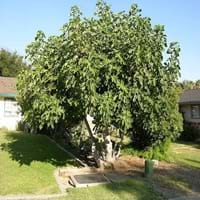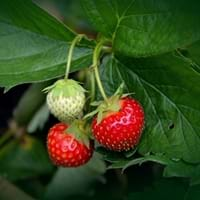Life Span
Perennial
Annual
Origin
Mediterranean, Western Asia
Hybrid origin
Types
Brown Turkey Fig, Texas Everbearing Fig, Celeste Fig
Not Available
Habitat
Sunny Edge, Woodland Garden
gardens
USDA Hardiness Zone
6-10
4-8
Sunset Zone
H1, H2, 4, 5, 6, 7, 8, 9, 12, 13, 14, 15, 16, 17, 18, 19, 20, 21, 22, 23, 24
A1, A2, A3, H1, H2, 1a, 1b, 2a, 2b, 3a, 3b, 4, 5, 6, 7, 8, 9, 14, 15, 16, 17, 18, 19, 20, 21, 22, 23, 24
Habit
Oval or Rounded
Mat-forming
Flower Color Modifier
Bicolor
Bicolor
Fruit Color
Purple, Black
Red
Leaf Color in Spring
Green, Dark Green
Green
Leaf Color in Summer
Green, Dark Green
Green
Leaf Color in Fall
Green, Dark Green
Green
Leaf Color in Winter
Light Green
Light Green
Leaf Shape
Irregular
Round
Plant Season
Spring, Summer, Fall
Spring, Summer, Fall
Sunlight
Full Sun, Partial Sun, Partial shade
Full Sun
Type of Soil
Clay, Loam, Sand
Loam
The pH of Soil
Acidic, Neutral
Acidic, Neutral
Soil Drainage
Well drained
Well drained
Bloom Time
Spring, Early Summer
Late Spring, Summer, Early Fall
Tolerances
Drought
Drought
Where to Plant?
Container, Ground
Ground, Pot
How to Plant?
Cuttings, Seedlings
Seedlings
Plant Maintenance
Medium
Medium
Watering Requirements
Average Water Needs, Do Not over Water, Needs watering once a week, Requires watering in the growing season
Does not require lot of watering, Water more in summer
In Summer
Lots of watering
Lots of watering
In Spring
Moderate
Moderate
In Winter
Average Water
Average Water
Soil pH
Acidic, Neutral
Acidic, Neutral
Soil Type
Clay, Loam, Sand
Loam
Soil Drainage Capacity
Well drained
Well drained
Sun Exposure
Full Sun, Partial Sun, Partial shade
Full Sun
Pruning
Prune in fall, Remove damaged leaves, Remove dead branches, Remove dead leaves, Remove dead or diseased plant parts
Remove damaged leaves, Remove dead branches, Remove dead leaves
Fertilizers
All-Purpose Liquid Fertilizer, fertilize in fall, fertilize in winter
All-Purpose Liquid Fertilizer
Pests and Diseases
Red blotch
Red blotch
Plant Tolerance
Drought
Drought
Flower Petal Number
Not Available
Single
Foliage Texture
Coarse
Medium
Foliage Sheen
Matte
Matte
Allergy
Eye irritation
no allergic reactions
Aesthetic Uses
Not Used For Aesthetic Purpose
Not Used For Aesthetic Purpose
Beauty Benefits
Glowing Skin, Good for skin
Not Available
Environmental Uses
Air purification, Food for birds, Food for insects, Shadow Tree, Windbreak
Air purification
Medicinal Uses
anti-cancer, Demulcent, Digestive, Emollient, Galactogogue, Laxative, Pectoral, Stomachic, Tonic
Not Available
Part of Plant Used
Fruits, Leaves, Wood
Fruits
Other Uses
Garland, Used as Ornamental plant, Used for woodware
Used As Food, Used as Ornamental plant
Used As Indoor Plant
No
Yes
Used As Outdoor Plant
Yes
Yes
Garden Design
Container, Edible, Feature Plant, Fruit / Fruit Tree, Houseplant, Topiary / Bonsai / Espalier
Container, Edging, Edible, Fruit / Fruit Tree, Hanging Basket, Herb / Vegetable
Botanical Name
FICUS carica 'Black Mission'
FRAGARIA x ananassa 'Ozark Beauty'
Common Name
Black Mission Fig, Fig
Garden Strawberry, Ozark Beauty Strawberry, Strawberry
In Hindi
Black Mission Fig Tree
Ozark स्ट्राबेरी
In German
Schwarz Mission Fig Tree
Ozark Strawberry
In French
Noir Mission Fig Tree
Ozark Fraise
In Spanish
Negro Misión de la Higuera
Ozark fresa
In Greek
Μαύρο Αποστολή Fig Tree
Ozark Φράουλα
In Portuguese
Black Tree Fig Missão
Ozark morango
In Polish
Czarny Mission Fig Tree
Ozark Strawberry
In Latin
Niger Mission ficum
Ozark Strawberry
Phylum
Magnoliophyta
Not Available
Class
Not Available
Magnoliopsida
Clade
Angiosperms, Eudicots, Rosids
Angiosperms, Eudicots, Rosids
Tribe
Ficeae
Not Available
Subfamily
Not Available
Rosoideae
Number of Species
Not Available
Not Available
Season and Care of Black Mission Fig and Ozark Strawberry
Season and care of Black Mission Fig and Ozark Strawberry is important to know. While considering everything about Black Mission Fig and Ozark Strawberry Care, growing season is an essential factor. Black Mission Fig season is Spring, Summer and Fall and Ozark Strawberry season is Spring, Summer and Fall. The type of soil for Black Mission Fig is Clay, Loam, Sand and for Ozark Strawberry is Loam while the PH of soil for Black Mission Fig is Acidic, Neutral and for Ozark Strawberry is Acidic, Neutral.
Black Mission Fig and Ozark Strawberry Physical Information
Black Mission Fig and Ozark Strawberry physical information is very important for comparison. Black Mission Fig height is 760.00 cm and width 300.00 cm whereas Ozark Strawberry height is 15.20 cm and width 300.00 cm. The color specification of Black Mission Fig and Ozark Strawberry are as follows:
Black Mission Fig flower color: Green
Black Mission Fig leaf color: Green and Dark Green
Ozark Strawberry flower color: White
- Ozark Strawberry leaf color: Green
Care of Black Mission Fig and Ozark Strawberry
Care of Black Mission Fig and Ozark Strawberry include pruning, fertilizers, watering etc. Black Mission Fig pruning is done Prune in fall, Remove damaged leaves, Remove dead branches, Remove dead leaves and Remove dead or diseased plant parts and Ozark Strawberry pruning is done Remove damaged leaves, Remove dead branches and Remove dead leaves. In summer Black Mission Fig needs Lots of watering and in winter, it needs Average Water. Whereas, in summer Ozark Strawberry needs Lots of watering and in winter, it needs Average Water.





